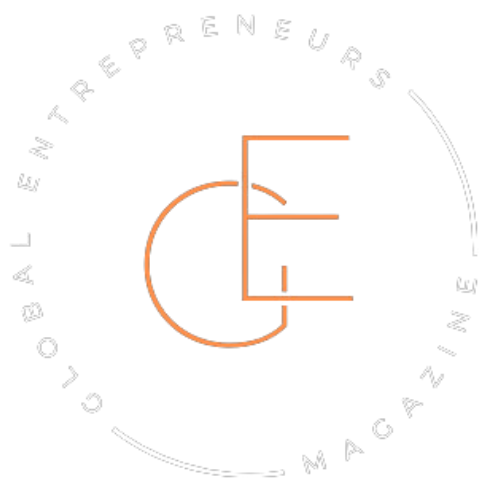Sarah had built something incredible. What started as a side hustle in her garage turned into a thriving business with loyal customers, a growing team, and industry recognition. She was the face of the company—the driving force behind every major decision, the problem solver, the visionary. Clients wanted her, employees turned to her, and no one could imagine the business without her.
And that was the problem.
One day, Sarah had to step away. Nothing catastrophic—just a family emergency that pulled her out of the day-to-day for a few weeks. But the moment she was gone, cracks started showing. Deadlines were missed, clients grew frustrated, and her team—despite their talent—hesitated to act without her final say. By the time she returned, damage had been done. Key accounts had left, employee morale had plummeted, and the realization hit her like a brick: She hadn’t built a business. She had built a dependency.
Sarah’s story isn’t unique. It’s the silent risk that comes with success—the founder’s trap. The more a business relies on its founder, the more fragile it becomes. And ironically, the very skills that helped build the company—relentless drive, perfectionism, and an ability to wear multiple hats—are the same ones that can hold it back.
If stepping away from your business for a month (or even a week) would send everything into chaos, it’s time to ask a hard question: Have you built something that can outlive you? Or are you the one thing holding it together?
Let’s talk about how to break free from the founder’s trap—before it’s too late.
The Founder’s Trap: Why Businesses Struggle to Outgrow Their Creators
The founder’s trap is a slow burn. It doesn’t happen overnight. At first, it looks like dedication—answering every call, signing off on every decision, making sure everything runs exactly the way you envisioned. It feels like doing the right thing. After all, who else understands the business better than the person who built it?
But then, something shifts.
A growing list of problems lands on your desk because your team hesitates to act without your approval. Big opportunities slip through the cracks because you’re too busy putting out fires. The business stops evolving because every decision, no matter how small, has to run through you. And when something does go wrong, all eyes turn in your direction—because no one else has ever been given the authority to solve things on their own.
This is how businesses get stuck.
Look at some of the most promising companies that failed after their founder left. They weren’t built to function without their creator. The systems weren’t in place, leadership wasn’t empowered, and culture was so tightly tied to one person that once they were gone, the foundation crumbled.
And yet, letting go isn’t easy. It’s not just about control—it’s personal. When you’ve spent years building something from the ground up, the idea of stepping back can feel like a loss of identity. What if things go wrong? What if no one can maintain the same standards? What if it doesn’t feel like your company anymore?
These are the thoughts that keep founders trapped. But holding on too tightly isn’t protecting the business—it’s suffocating it. If growth stops with you, then the company isn’t really growing at all.
The good news? Breaking out of the founder’s trap is possible. It starts with a shift in mindset—from doer to builder. Let’s talk about what that looks like.
How to Build a Business That Thrives Without You
Shift from ‘Doer’ to ‘Builder’
Jason ran his business the way most founders do—by being involved in everything. He was the first one in, the last one out, and the go-to for every problem. He prided himself on his work ethic. But as the company grew, so did his workload. Soon, he was drowning in emails, approving minor decisions, and personally troubleshooting every issue. Growth had stalled, not because the business lacked potential, but because he had made himself the bottleneck.
The turning point came when he met a mentor who told him something that stung: “Right now, you’re a worker, not a leader.”
That’s the mistake most founders make. They believe that being hands-on is the only way to maintain quality. In reality, it keeps them stuck in the weeds. Founders who fail to step back eventually burn out—or worse, hold their business back without realizing it.
The real shift happens when a founder stops asking, How do I get this done? and starts asking, How do I build a system that gets this done without me?
It means hiring people you trust, empowering them to make decisions, and resisting the urge to micromanage. It means focusing on the big picture—growth, vision, and strategy—rather than daily operations. It means understanding that long-term success isn’t about how much you can accomplish, but how well you can build a company that functions beyond you.
The most successful founders aren’t the ones who do everything. They’re the ones who create businesses that can thrive without them.
Build a Strong Leadership Team
A founder’s instinct is to hire people who can execute. It’s natural—you need things done, so you bring in people who can follow directions. But execution alone isn’t enough to scale a company. If every decision still lands on your desk, you don’t have a team—you have employees waiting for orders.
The best founders don’t just hire for skills; they hire for leadership.
Take Daniel, for example. He built a fast-growing tech company but found himself buried under constant approvals, strategy meetings, and last-minute fire drills. His team was talented, but they hesitated to make decisions without his final word. It wasn’t a competency issue—it was a culture issue. They had been trained to ask rather than act.
That changed when Daniel started hiring people who weren’t just skilled, but who thought like owners. Instead of managing every detail, he brought in leaders—people who could take responsibility, make tough calls, and challenge his thinking. The result? The company moved faster, big opportunities weren’t stuck in limbo, and for the first time, Daniel was able to focus on growing the business instead of running it.
A strong leadership team isn’t about filling roles—it’s about finding people who can run things without you. If you’re still the one making every call, it’s time to ask yourself: Have I built a team, or have I built a safety net for my own decision-making?
Document What’s in Your Head
Most founders assume their team “just knows” how things work. After all, they’ve been doing it for years—why wouldn’t the processes be obvious? But when key decisions, workflows, and company knowledge live only in your head, your business is one step away from chaos the moment you step back.
That’s exactly what happened to Lisa. She built a thriving boutique agency from scratch, but everything depended on her—client relationships, pricing structures, even how invoices were handled. When she took a brief sabbatical, the team scrambled. No one knew how to onboard new clients the way she did. No one was sure how she structured contracts. Things that seemed simple in her mind were mysteries to everyone else.
Clear documentation would have prevented the breakdown.
Processes don’t have to be complicated. They just need to be written down, easy to follow, and accessible to the right people.
- How do you onboard new clients?
- What’s the standard way to handle customer issues?
- How are major decisions made?
- Who is responsible for what?
If these answers exist only in your memory or scattered across random emails, your team is left guessing. And when people guess, mistakes happen.
The businesses that survive beyond their founder have systems, not secrets. If you want yours to run without you, start documenting now—before you need to.
Create a Culture That Outlives You

A business isn’t just built on products, services, or strategies—it’s built on culture. The problem? Too many founders are the culture. Their values, their work ethic, their decision-making style—it all flows from them. And when they leave, the business loses its identity.
That’s what nearly happened to Mark’s company. For years, he was the heartbeat of the business. He set the tone, made the tough calls, and personally reinforced the values that defined the brand. But when he stepped back, things changed. The team started making decisions that didn’t align with what he had built. Standards slipped. Long-time customers noticed something felt… different.
The issue wasn’t that his team didn’t care—it was that no one had ever defined what made the company what it was. Mark had carried the culture in his actions, but he had never embedded it in a way that could survive without him.
A culture that lasts isn’t just spoken—it’s written, reinforced, and woven into how the business operates.
- Define your values. What do you stand for? What’s non-negotiable?
- Make decisions based on those values. Culture isn’t a wall poster—it’s the way things actually run.
- Hire people who fit—not just in skills, but in mindset. A strong culture repels the wrong people and attracts the right ones.
- Reinforce it daily. In meetings, in how challenges are handled, in how success is celebrated.
If your company’s identity is tied only to you, it won’t last beyond you. But if your culture is clear, documented, and actively reinforced, it becomes the glue that holds the business together—no matter who’s at the helm.Plan Your Exit—Even If You’re Not Leaving Yet
Most founders don’t think about their exit until they have to. Maybe burnout creeps in. Maybe life pulls them in a different direction. Maybe an unexpected opportunity makes stepping away the right move. But by the time they start planning, it’s often too late—the business isn’t ready, the leadership team isn’t equipped, and the transition feels like a crisis instead of a choice.
The best founders don’t wait for that moment. They build their business with an exit in mind from day one—not because they’re planning to leave, but because a business that’s built to survive without its founder is stronger in every way.
There are three main exit paths:
- Sell the business. Some founders eventually cash out, but a business that relies on its owner isn’t worth much. Buyers want companies with solid leadership, clear systems, and stability beyond the founder.
- Pass it to your leadership team. This works only if you’ve built a team that can truly take over. If you’re still the decision-making bottleneck, this isn’t an option yet.
- Step into an advisory role. Instead of running the day-to-day, some founders transition to a board or mentor position, allowing them to guide without controlling.
A founder’s job isn’t just to build a company—it’s to build a company that lasts. If the business can’t run, grow, and evolve without you, it’s not truly independent. And the sooner you start thinking about that, the stronger your company will be—whether you leave next year or never.
Plan Your Exit—Even If You’re Not Leaving Yet
Most founders don’t think about their exit until they have to. Maybe burnout creeps in. Maybe life pulls them in a different direction. Maybe an unexpected opportunity makes stepping away the right move. But by the time they start planning, it’s often too late—the business isn’t ready, the leadership team isn’t equipped, and the transition feels like a crisis instead of a choice.
The best founders don’t wait for that moment. They build their business with an exit in mind from day one—not because they’re planning to leave, but because a business that’s built to survive without its founder is stronger in every way.
There are three main exit paths:
- Sell the business. Some founders eventually cash out, but a business that relies on its owner isn’t worth much. Buyers want companies with solid leadership, clear systems, and stability beyond the founder.
- Pass it to your leadership team. This works only if you’ve built a team that can truly take over. If you’re still the decision-making bottleneck, this isn’t an option yet.
- Step into an advisory role. Instead of running the day-to-day, some founders transition to a board or mentor position, allowing them to guide without controlling.
A founder’s job isn’t just to build a company—it’s to build a company that lasts. If the business can’t run, grow, and evolve without you, it’s not truly independent. And the sooner you start thinking about that, the stronger your company will be—whether you leave next year or never.
Final Thought: Building for Longevity, Not Just for You
The real test of a founder isn’t just starting a business—it’s making sure it can stand without them. Some businesses shine when their founder is at the helm but crumble the moment they step away. Others keep growing, evolving, and thriving long after their creator has moved on. The difference? Intentional design.
A business that outlives its founder isn’t built by accident. It happens when leadership is distributed, knowledge is documented, culture is embedded, and long-term planning isn’t an afterthought.
At some point, every founder faces a choice: keep running everything until exhaustion takes over or build something that lasts beyond their own involvement. The strongest companies—the ones that truly make an impact—aren’t the ones built around a single person. They’re the ones designed to grow, adapt, and lead long after that person is gone.
If you had to step away tomorrow, would your business survive? If not, now is the time to fix that.
Final Thought: Building for Longevity, Not Just for You
The real test of a founder isn’t just starting a business—it’s making sure it can stand without them. Some businesses shine when their founder is at the helm but crumble the moment they step away. Others keep growing, evolving, and thriving long after their creator has moved on. The difference? Intentional design.
A business that outlives its founder isn’t built by accident. It happens when leadership is distributed, knowledge is documented, culture is embedded, and long-term planning isn’t an afterthought.
At some point, every founder faces a choice: keep running everything until exhaustion takes over or build something that lasts beyond their own involvement. The strongest companies—the ones that truly make an impact—aren’t the ones built around a single person. They’re the ones designed to grow, adapt, and lead long after that person is gone.
If you had to step away tomorrow, would your business survive? If not, now is the time to fix that.




